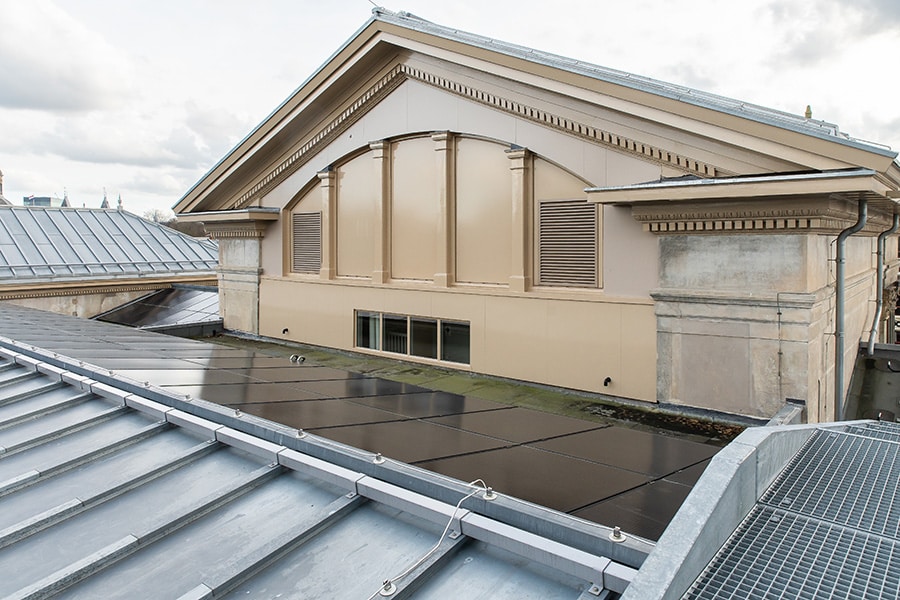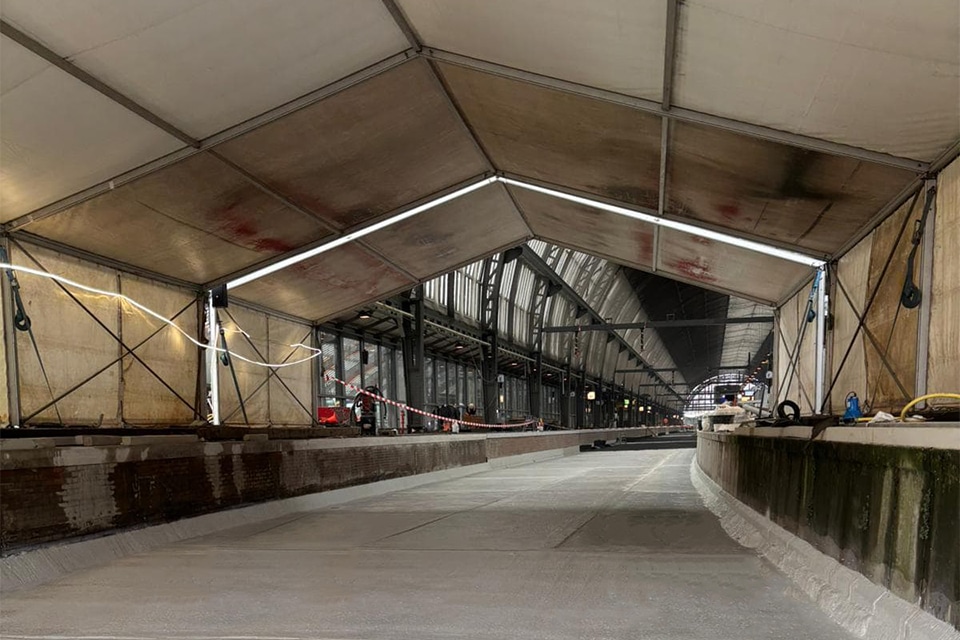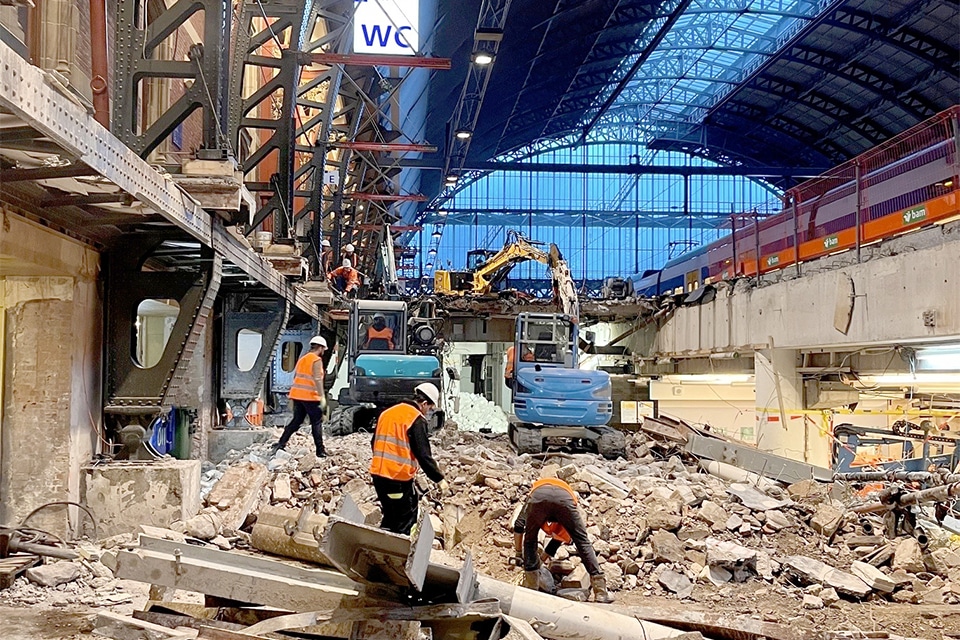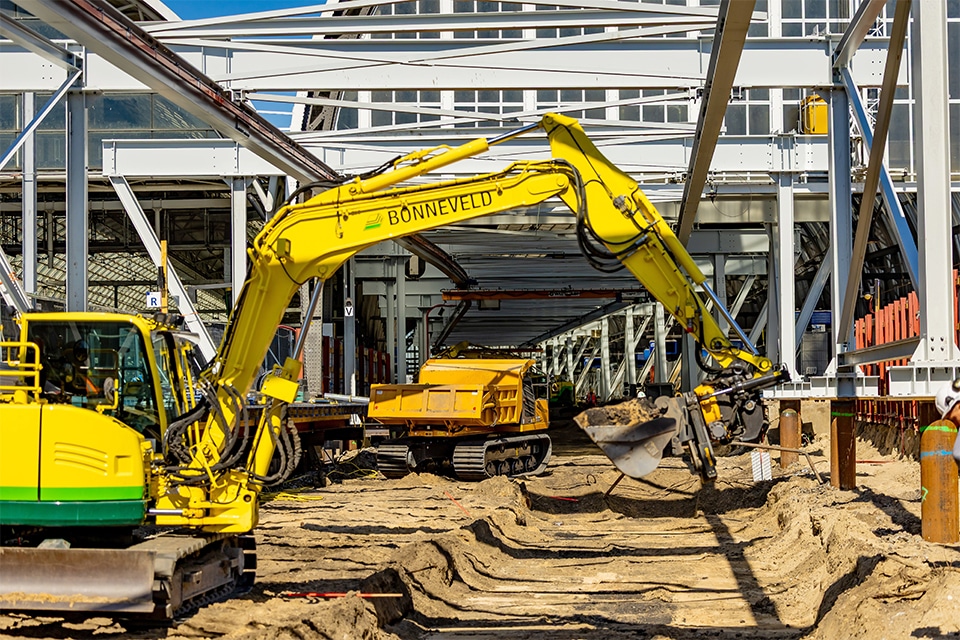
Complex earthmoving in a monumental station
Amsterdam Central Station is undergoing the largest renovation in its history. The mega job has been awarded to Strukton, which is outsourcing the large-scale earthmoving work to Bonneveld Aannemingsbedrijf. A complex job in a historic environment. The company from Bunschoten-Spakenburg has faced tougher challenges in the past and is making sure that it jumps on the train in time for this project as well. Literally and figuratively, in this case.
With this large-scale renovation, the platforms will be widened and lengthened and distributed more evenly throughout the station. In addition, the eastern passenger tunnel will be widened and bicycle parking under the eastern tracks will also be expanded to nearly 9,000 parking spaces. To make that happen, one track box and one bridge will be under construction each year, from north to south. "And that involves quite a bit of earthmoving, some 50,000 m3 divided into four phases," says Sander Bos, head of estimation at Bonneveld. "Strukton is removing the superstructure and ballast, after which we are doing the earthwork all the way to the bottom of the new floor. This is done in several stages per phase, in between installing the strut frames, anchors, sheet pile walls, drainage and soil improvement."
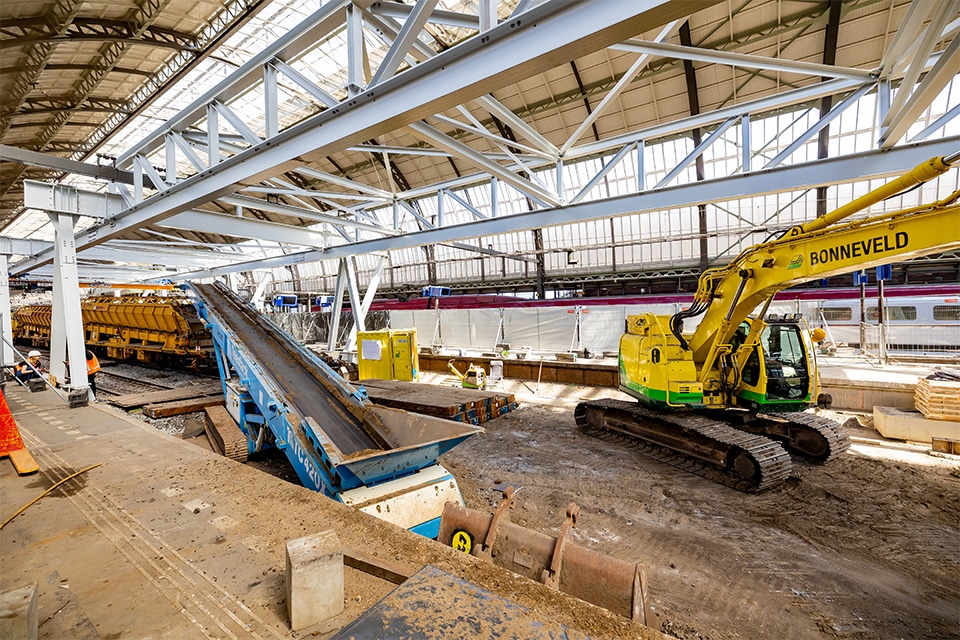
Everything by train
It is also a project with a major logistical challenge, according to Stefan Albers, technical director at Bonneveld. "The removal of the material goes by train, where the wagons are filled via a conveyor belt. In the evening, the train travels to Roosendaal, where the material is unloaded at GBN's site before being ready for the next load in the morning." Bonneveld's equipment is also supplied by train, from the port in Amsterdam. "It is important to prepare this well, because there are only two trains going that way per phase," says Albers, who explains that Bonneveld's equipment on the project includes two 25-ton crawler cranes, several compact crawler dumpers and some smaller equipment. In addition, road plates and drainage pumps are also going with the train. "The soundings showed that soil improvement had to be applied in some places. We are also taking care of that with our regular partner Theo Van Velzen."
Long and narrow cockpit
In the work area, Bonneveld's crawler dumpers and crawler cranes are moving up and down. In fact, the train for removing the soils is set up at the head of the work area. "It is a narrow and long tub of 200 meters long," Bos outlines the situation. "Along the way we encounter all kinds of things, such as outrigger frames over which we make a track with driving plates and sand. So space is limited, which is why we deploy equipment on tracks, which is very maneuverable. We then excavate the tub from back to front toward the train. To avoid having to "stack" equipment at the end, we set up an extra work train that acts as temporary storage. Here we park all the machinery that is left, so that we can put everything back on the train in one go at the end of the phase."
According to Albers, Bonneveld will be finished with the first phase by the first week of August this year. "Then everything will return by train to the boarding location and we will start preparing for the second phase again by the end of the year."
